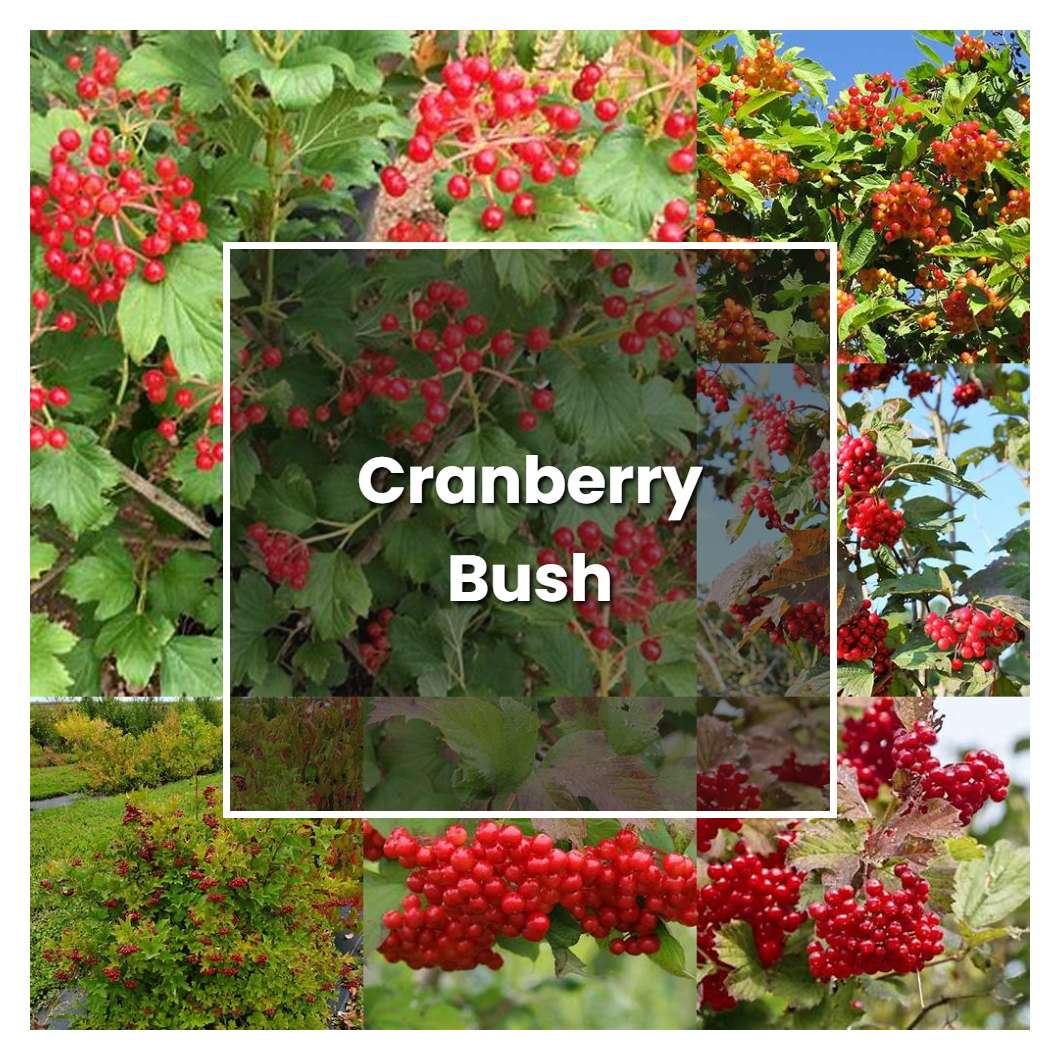Cranberry bush is a shrub that grows in cool, wet areas. The cranberry bush is native to North America and Europe. The cranberry bush has small, dark-green leaves and small, white flowers. The bush produces a small, red fruit that is used in many foods and drinks.

Related plant:
European Cranberry Bush
Related plant:
Cranberry Cotoneaster
About soil condition, a cranberry bush requires well-drained soil that is high in organic matter. The soil should be acidic, with a pH of 4.5 to 5.5. If your soil is not acidic enough, you can add sulfur to lower the pH.
Like the other plants, cranberry bushes need sunlight to grow. Too little sunlight can cause the plants to produce fewer berries, and too much sunlight can cause the berries to become sunburned. The ideal amount of sunlight for cranberry bushes is 6 to 8 hours per day.
The temperature conditions that are necessary for a cranberry bush to thrive are not especially demanding. Cranberry bushes can grow in a wide range of temperatures, as long as they have access to fresh water. In general, cranberry bushes prefer cooler climates, and they will not produce fruit if the temperature gets too hot.
Ideal humidity condition for this plant is 50%. If the humidity drops below 40%, the plant will start to experience stress. Leaves may turn brown and fall off, and the plant may stop growing. If the humidity rises above 60%, the plant may start to experience fungal growth.
Fertilizer requirements for cranberry bushes vary depending on the age and health of the plant, as well as the type of soil in which it is grown. In general, however, cranberry bushes need to be fertilized every year with a balanced fertilizer that contains nitrogen, phosphorus, and potassium.
Pruning a cranberry bush is important to maintain its shape and size. Cranberry bushes can be pruned in late winter or early spring. When pruning, remove any dead, diseased, or damaged branches. Also remove any branches that are crossing or rubbing against each other.
Propagation is the process of creating new plants from existing ones. The cranberry bush can be propagated by taking stem cuttings from an existing plant and rooting them in soil. To do this, first fill a pot with moistened potting mix. Then, using a sharp knife, take a 4-6 inch cutting from the tip of a healthy branch. Strip the leaves from the bottom half of the cutting and dip the cut end into rooting hormone. Next, insert the cutting into the potting mix and water it well. Keep the cutting in a warm, bright location and water it regularly until new growth appears. At that point, you can transplant the new plant into a larger pot or into the ground.
Usually, the plant growth rate is determined by the variety of plant, age, and growing conditions. However, in general, cranberry bushes can grow quite quickly, with some varieties growing up to 24 inches (61 cm) per year. This can make for quite a lot of fruit each year, so if you're growing cranberries for their fruit, make sure you have a good plan for what to do with all of that bounty.
Common problems for this kind of plant are powdery mildew, rust, and root rots. The best way to avoid these problems is to plant the bush in well-drained soil and to water it regularly. If you see any of these problems, you should treat the bush with a fungicide.
Source:
Viburnum opulus var. americanum (American Cranberry Bush,
Highbush Cranberry (Viburnum trilobum OR Viburnum
The Cranberry - Center for Agriculture, Food, and the Environment
